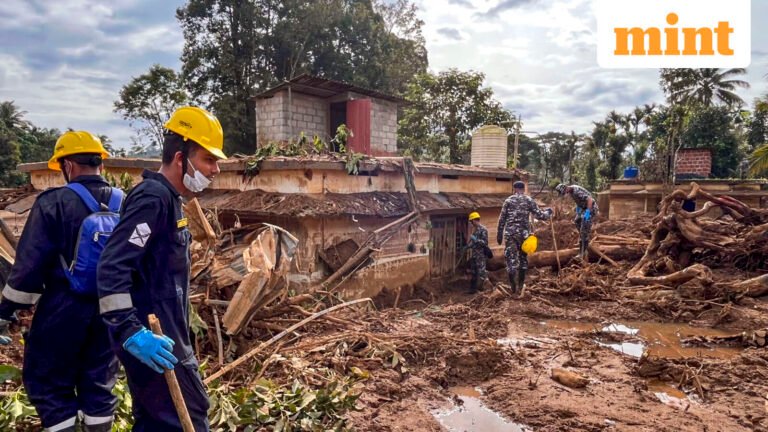The Economic Survey of 2024-25 described India as the seventh most vulnerable country to climate change. The Global Climate Risk Index 2025, based on the experience of extreme weather events from 1993 to 2022, places India sixth.
A 2018 report from the UN Office for Disaster Risk Reduction (UNDRR) ranked India among the five most risk-exposed countries, with about $79.5 billion in losses due to natural disasters over the last 20 years.
Asia’s emerging and developing economies have a massive annual climate-action funding gap of over $800 billion, according to an International Monetary Fund report of 2024.
CoP-27 at Sharm El Sheikh, Egypt, concluded with a breakthrough agreement on providing loss and damage funding for vulnerable countries hit hard by climate disasters. But that commitment is unfulfilled. The news from CoP-30 in Brazil has been depressing. Esther Dweck, Brazilian minister for management and innovation in public services, observed that governments must invest in their own capacities.
Climate action must be funded jointly by the government and private sector. The latter should be obligated by legislative directions. Funding can be strengthened by credit enhancement, blended finance and guarantees, among other means. The market for green bonds should be expanded substantially.
Insurance is an instrument that democratizes a risk. Unfortunately, climate-disaster insurance faces a ‘protection gap,’ where the cost of climate- related disasters is outpacing what insurance can cover, leading to rising premiums, shrinking coverage and insurers withdrawing from high-risk areas. Parametric insurance, where a fixed amount is paid irrespective of losses on specified and verifiable events (much like life insurance), has made limited headway so far.
Eventually, the responsibility for relief funding will fall squarely on the government. The UN Framework Convention on Climate Change (UNFCCC) Climate Action Tracker (2025) noted that India spent $3 billion, or roughly 0.8% of GDP, on disaster relief in 2024-25.
India has set up The National Disaster Relief Fund (NDRF), but it does not have a fixed size or corpus. Funds are allocated for a specific multi-year period based on recommendations of the Finance Commission (FC). The 15th FC allocated a total of ₹54,770 crore (over $6 billion) for the period from 2021-22 to 2025-26, at an average of $1.5 billion a year, leaving a sizeable funding gap.
India’s financial markets have come of age. Its capital market has been steering pioneering innovations and development of products like real estate investment trusts (REITs) and infraREITs. It is now time to focus on creating a market for catastrophe bonds (or cat bonds) to spread risks and substantially reduce the relief burden on the government’s finances.
Cat bonds are a type of insurance security that transfer the financial risk of natural disasters like earthquakes and hurricanes from insurers or governments to private investors. They receive higher interest payments, but their principal is at risk; if a predefined catastrophic event occurs, part or the entire principal is paid out to cover losses. Cat bonds tap the deep pockets of global capital markets. Globally, the premium in 2025 ranged from 6.3% to 11.3%, depending on the risks.
Using parametric triggers based on objective, measurable events such as wind speed and earthquake intensity can make payouts faster than traditional insurance claims, which require lengthy loss assessments. By securing pre-arranged funding, the government can ring-fence public expenditure and avoid fiscal shocks associated with major disaster recovery efforts.
Cat bonds issued by insurance and reinsurance companies and governments are currently marketed in Japan, Europe, the US, Mexico and the Philippines, among other countries. The World Bank Group has issued multi-country cat bonds for 16 Caribbean countries. Globally, the total value of outstanding cat bonds currently stands at about $56 billion.
Launching cat bonds would require an appropriate legal and regulatory framework, apart from capacity building. Though general principles of regulating a security would apply, cat bonds demand a specific framework that would govern bond issuers, intermediaries, the sale of these bonds to investors and solvency margins.
Further, a framework must be designed for the use of data, setting up of advance catastrophe modelling infrastructure, creation of capabilities and more, so that risks are accurately priced, payout triggers work effectively and issuers as well as investors are educated appropriately on the concept of cat bonds. Poorly designed bonds that use rigid parametric triggers may fail to make payouts even if significant damages are borne, leading to mismatches between actual losses and received funds.
India should begin by sponsoring a pilot bond for specific high-impact hazards such as Himalayan earthquakes and Bay of Bengal cyclones, using the expertise and credibility of international institutions such as the World Bank and Asian Development Bank to generate investor confidence.
As the market matures, efforts should focus on expanding the range of products. Risk coverage could go beyond primary events to secondary ones such as floods and wildfires, even as we develop hybrid triggers that better match payouts with losses. Leveraging Aadhaar-linked bank accounts could ensure rapid and transparent disbursement of funds to those in need of relief.
India’s national interest warrants immediate action to reduce the fiscal burden on the government and bridge the disaster-relief funding gap.
The authors are, respectively, former chairman Sebi and LIC; and former deputy comptroller and auditor general and member, National Financial Reporting Authority.

